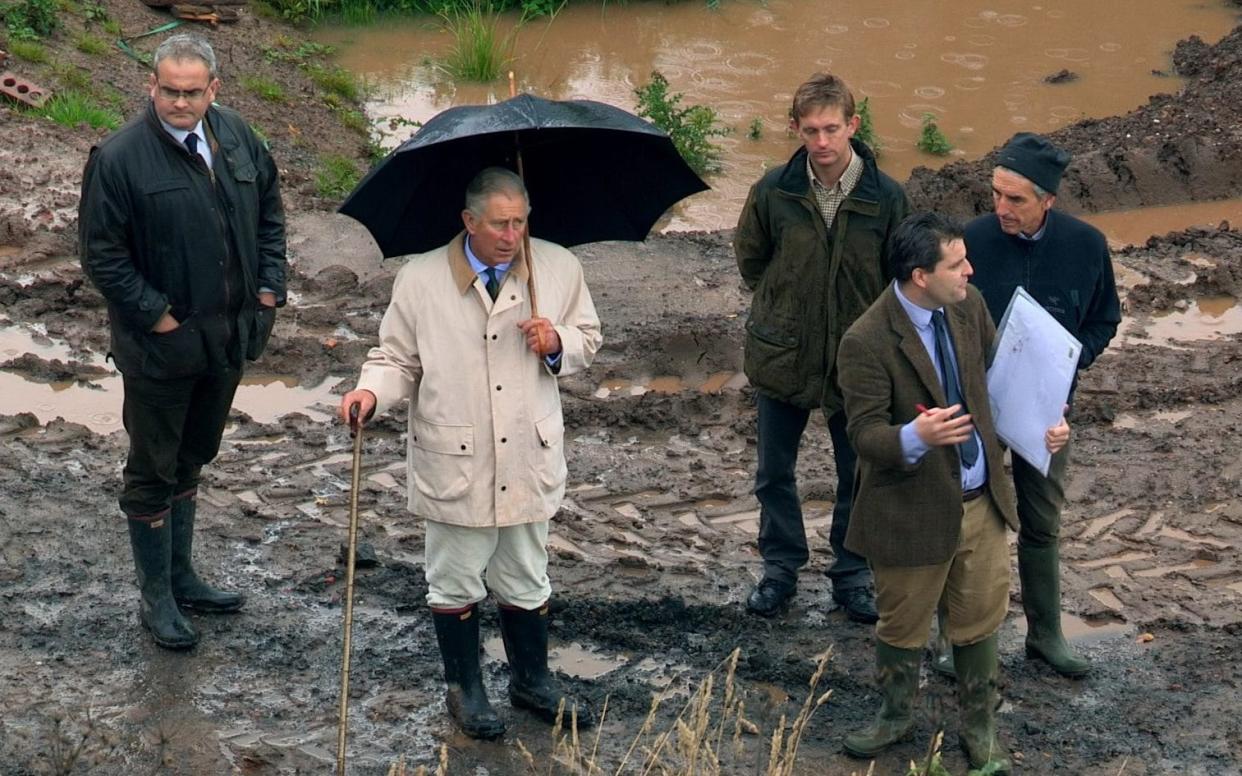I want to save stately homes from becoming failed golf courses, says King

When the then Prince Charles stepped in to save Dumfries House for the nation, it was described as the biggest financial gamble of his life.
Now, 15 years on, the King has hailed the successful restoration project in Ayrshire as proof that heritage-led regeneration “works… every time”.
“I knew if we hadn’t stepped in and saved it, somebody would have bought it and said they had a great idea, you know, for golf courses and things,” he told a Grand Designs-style documentary.
“And it would never have worked, so it would have joined the list of yet more derelict country houses.”
Filmmaker Jim Brown followed the Prince for more than a decade as he oversaw every element of the Dumfries House restoration, from advising where to source a favoured type of Belgian brick to agonising over the fate of a 300-year-old Sycamore.
Another project
So successful was the project that Charles hinted he had another, similar initiative in the pipeline, similarly fuelled by a desire to improve livelihoods in deprived areas.
“That’s my problem, I’m perfectly overambitious and long to use this model in other parts of the country,” he said.
“I hope there will be another project fairly soon which could be quite large. I haven’t given up yet. Watch this space, as they say.”

The King secured the future of the Palladian mansion, including its “jaw dropping” collection of 18th-century furniture, in 2007 with a £45 million rescue package that included a £20 million cheque from his own charitable foundation.
At the time, he admitted that it was “an appalling risk” but insisted it was about people and the local community as much as the estate itself.
He told Brown that he hoped the “incredibly powerful” impact the project had had on the local community - 300 people work at Dumfries House and many more enjoy its gardens - had made it worthwhile.
“The physical renewal helps the spiritual and psychological,” he said.
“Particularly when places have got into a spiral of hopelessness and despair and loss of traditional industries and those sorts of things. I hope we have started to demonstrate that here.”
Rococo furniture
On the unique collection of Rococo furniture - much of it hand-crafted by Thomas Chippendale - which has now been painstakingly restored, he added: “The collection that was specifically designed for this house would have been split up and sent all over the world.”
The ITV documentary, a Royal Grand Design, shows quite how personally invested the then Prince was in every level of detail. It was filmed before he acceded to the throne.
Strolling through the walled garden, he pointed to a display of white and blue flowers noting that “some should be pink”, before adding with unmistakable pride: “This would win a prize at the Chelsea Flower Show.”
He revealed that the gothic Belvedere, which overlooks the walled garden, is based on his own design, its four lead Wyvern gargoyles commissioned at his request.
“I did an awful sketch of it because I’d based it on something... some marvellous folly or house I’d seen,” he said.
Brown said that for the King, “detail is all important,” pointing out that the maze he designed was inspired by one at Sandringham where he played as a child.
“The garden was very close to his heart, he knew exactly what he wanted and how it would react to the Scottish weather,” he told the Telegraph.
Toasting marshmallows
Elsewhere, the King revealed himself to be something of an expert when it comes to toasting marshmallows.
“You really need a longer stick and from a lower angle,” he advised one group huddled around a bonfire. “Otherwise you cook your fingers.”
In making the documentary, Brown spent far more time with the King than he had anticipated, having initially believed it to be a two-year project.
“At the beginning I was surprised at His Royal Highness’s attention to detail,” he said.
“I assumed that he had other people to make the day-to-day decisions, but as the weeks turned into months and then years, I really got the sense that this project was so important to him.”
At one point in the film, Charles told the workers “we will get there” before turning to Brown and adding, under his breath: “I hope so anyway.”
Brown said that “as a leader he was always optimistic, always positive and always motivating people.”
Raise people’s aspirations
The King admitted on camera that he had not realised the extent of the engineering involved in the Dumfries House project but expressed hope that it had achieved “an awful lot”.
“How do you raise people’s aspirations?” he asked. “How do you build self esteem? How do you develop the necessary skills to substitute for the previous traditional industries?
“I wanted to rescue the house because it is of such importance, I knew it was a very deprived area. I wanted to use it as a proper example of what I’ve always believed in, which is heritage-led regeneration. And trying to show people that it works… every time.”
A Royal Grand Design will be broadcast on Wednesday at 9pm

 Yahoo News
Yahoo News 
